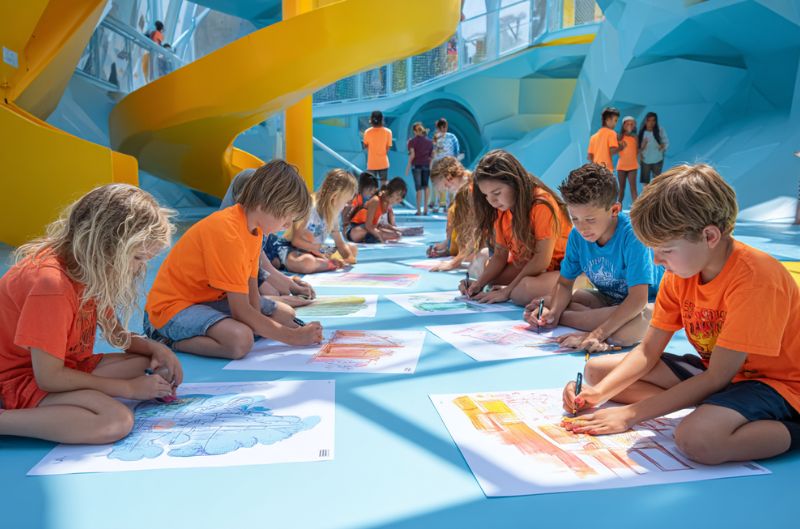
Community Collaboration for Inclusive Play Space Design
Author: Austin Stanfel
Designing play spaces is no longer a top-down process led solely by architects and planners. Across cities and neighborhoods, a growing movement emphasizes community collaboration- co-designing playgrounds with the very people who will use and care for them. This approach results in more vibrant, inclusive, and sustainable play areas and strengthens the social fabric of communities.
Why Community Collaboration Matters in Play Space Design
Playgrounds serve as vital communal spaces, supporting childhood development, social interaction, and community well-being. When residents are actively engaged in the design process, several key benefits emerge:
- Tailored Facilities: Community input ensures that the playground reflects its users’ unique needs, cultures, and aspirations, making it more relevant and engaging.
- Pride and Ownership: Involving residents fosters a sense of ownership, which translates to better stewardship, ongoing care, and long-term engagement with the space.
- Social Cohesion: Collaborative processes build relationships among neighbors, strengthen community spirit, and encourage collective responsibility.
- Inclusivity: Engaging diverse voices, including children, caregivers, and people with disabilities, leads to play spaces that are accessible and welcoming for all.
Principles of Co-Designing Play Spaces
Successful community-led playground projects share several guiding principles:
- Active and Ongoing Engagement: Community involvement should extend throughout the design process, not just during initial consultations. This includes workshops, public meetings, and feedback loops to keep residents informed and involved at every stage.
- Transparency and Feedback: Designers must communicate how community input is used, ensuring the process is seen as fair and participatory.
- Child-Centered Design: As primary users, children should play a central role in shaping their play environments. Techniques like interactive workshops, model-building, and creative drawing sessions help capture their ideas authentically.
- Inclusivity and Accessibility: Play spaces should be designed for all ages and abilities, encouraging integration rather than segregation. This includes accessible equipment, sensory-rich environments, and features that invite intergenerational use.
- Connection to Nature and Place: Incorporating natural elements and reflecting local site characteristics fosters a sense of place and environmental stewardship.
Methods for Effective Community Engagement
A variety of strategies can be used to gather and incorporate community feedback:
- Public Meetings and Workshops: In-person forums allow residents to discuss ideas, voice concerns, and collaboratively shape the vision for the play space.
- Surveys and Questionnaires: Distributed online or in public venues, these tools help reach a broad cross-section of the community.
- Interactive Sessions with Children: Creative activities, such as drawing, model-making, and storytelling, ensure that children’s perspectives are genuinely integrated.
- Social Media and Online Platforms: Digital engagement broadens participation and facilitates ongoing dialogue.
- Community Build Days: Inviting residents to participate in the construction or installation phase deepens their investment and pride in the finished space.
- Partnerships with Local Organizations: Collaborating with schools, nonprofits, and community groups enhances programming and ensures the space serves multiple community functions.
Overcoming Challenges in Community Collaboration
While the benefits are clear, collaborative design is not without its challenges:
- Diverse Opinions: Differing views can stall or derail projects. Open dialogue, skilled facilitation, and transparent negotiation are essential to address concerns and reach consensus.
- Sustaining Engagement: Maintaining momentum throughout the design, build, and maintenance phases requires regular updates, visible progress, and ongoing opportunities for involvement.
- Balancing Expertise and Community Input: While professional designers bring technical knowledge, they must remain flexible and responsive to community priorities, finding creative solutions that honor both perspectives.
The Lasting Impact of Co-Designed Play Spaces
When residents are co-designers rather than passive recipients, play spaces become more than recreational sites-they are expressions of community identity and pride. These collaborative efforts yield playgrounds that are:
- More inclusive and accessible
- Better maintained and cared for
- Richer in play value and creativity
- Stronger catalysts for social connection and community resilience
As cities and neighborhoods evolve, co-designing play spaces with residents stands as a model for participatory urban development- one that puts people, especially children, at the heart of public space creation.
“Inclusive design is not just about creating accessible spaces, but about fostering a sense of belonging and community for all.”
- Jane Doe, Accessibility Consultant
By embracing community collaboration, we can create play spaces that meet practical needs and inspire joy, connection, and a shared sense of place for generations to come.

